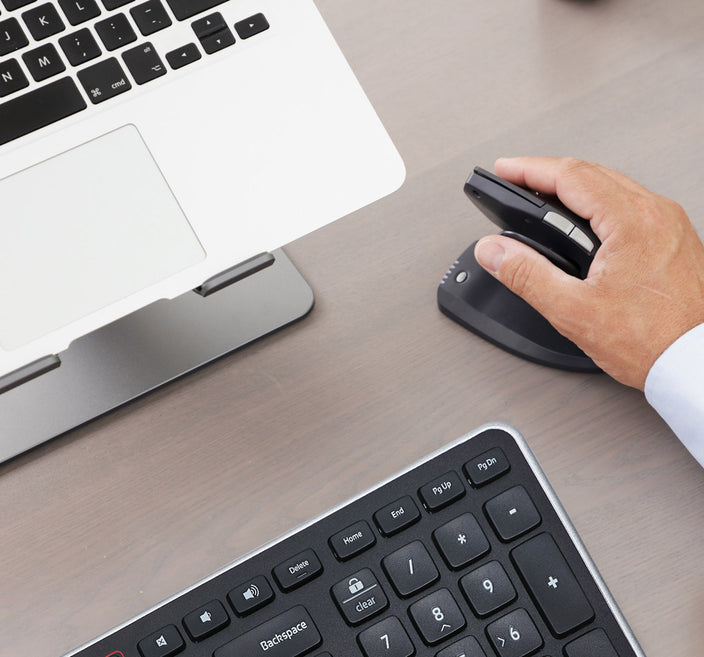The right ergonomic equipment and a centred mouse can reduce sick leave and increase employee productivity in one go. When employees are pain-free, they can focus on their work and keep at it for longer.
A pain-free working day is beneficial for both the employees and the company. Two out of three office workers experience physical pain due to work, and, for many, the pain leads to a higher frequency of sick leave.
Read more: Benefits of a centred mouse
The computer mouse is an essential factor behind pain related to office work – but often, we are not even aware of how much we use it. Thus the strain we put on our body is quite significant if we do not use an ergonomic mouse. A centred mouse can both reduce sick leave and increase well-being.
Protect the body with a centred mouse
When designing your workstation, you ought to think about how it can prevent straining your body. With a centred mouse in front of your keyboard, you can minimise strains, as it will keep your hands in front of your body, just as it encourages variation as you can control the mouse with both hands.
When you do not have to reach for your mouse, your work becomes more efficient, and you reduce the strain on your neck, shoulders, and forearms. Make sure to create an optimal working space around your work tools (mouse, keyboard and screen) to ensure variation and relaxation.
Is a centred mouse really that magical?
The short answer is yes. Ergonomics is not rocket science, but it can make a world of difference for the body, thereby reducing sick leave. It's about finding the right solutions.

And when it comes to ergonomics, any solution is individual. Therefore, one solution may be right for you, while another might suit your colleague better.
When it comes to the magic mouse, or the centred mouse as we call it, we always recommend trying out different models before deciding on one.
What is a mouse arm?
Mouse arm is a strain injury caused by monotonous, repetitive movements. It is also called RSI, which stands for Repetitive Strain Injury. When you have a mouse arm, it is will most often affect your elbow, forearm, wrist, hand, neck and shoulders.
When using a traditional mouse, you stretch and twist your forearm and wrist to unnatural positions because the work with the mouse is done away from the body.
Read more: 5 tips to reduce sick leave with ergonomics
“When people use a standard mouse, you often see that they work with the mouse far away from the body. That increases the risk of pain, and today it is well documented that you can reduce this risk by working with the tip of the elbow close to your ribs,” says Stuart Nottingham, a physiotherapist.
In other words, using the wrong mouse can strain many parts of the body and cause pain and muscle tension, which can lead to more sick leave. At the same time, that will also prevent you from becoming the most excellent version of yourself and performing at your best at work.



